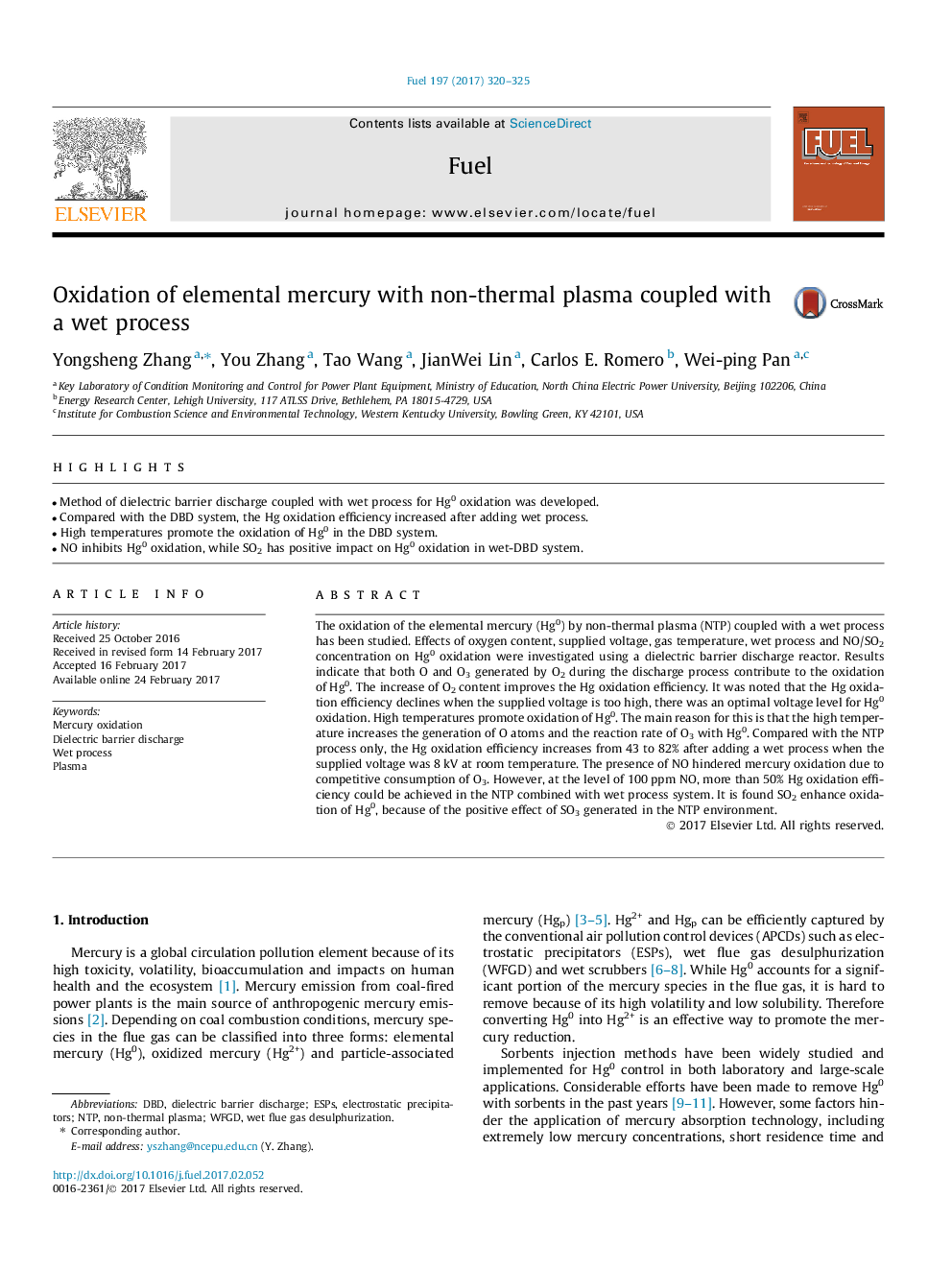| Article ID | Journal | Published Year | Pages | File Type |
|---|---|---|---|---|
| 6475230 | Fuel | 2017 | 6 Pages |
â¢Method of dielectric barrier discharge coupled with wet process for Hg0 oxidation was developed.â¢Compared with the DBD system, the Hg oxidation efficiency increased after adding wet process.â¢High temperatures promote the oxidation of Hg0 in the DBD system.â¢NO inhibits Hg0 oxidation, while SO2 has positive impact on Hg0 oxidation in wet-DBD system.
The oxidation of the elemental mercury (Hg0) by non-thermal plasma (NTP) coupled with a wet process has been studied. Effects of oxygen content, supplied voltage, gas temperature, wet process and NO/SO2 concentration on Hg0 oxidation were investigated using a dielectric barrier discharge reactor. Results indicate that both O and O3 generated by O2 during the discharge process contribute to the oxidation of Hg0. The increase of O2 content improves the Hg oxidation efficiency. It was noted that the Hg oxidation efficiency declines when the supplied voltage is too high, there was an optimal voltage level for Hg0 oxidation. High temperatures promote oxidation of Hg0. The main reason for this is that the high temperature increases the generation of O atoms and the reaction rate of O3 with Hg0. Compared with the NTP process only, the Hg oxidation efficiency increases from 43 to 82% after adding a wet process when the supplied voltage was 8Â kV at room temperature. The presence of NO hindered mercury oxidation due to competitive consumption of O3. However, at the level of 100Â ppm NO, more than 50% Hg oxidation efficiency could be achieved in the NTP combined with wet process system. It is found SO2 enhance oxidation of Hg0, because of the positive effect of SO3 generated in the NTP environment.
